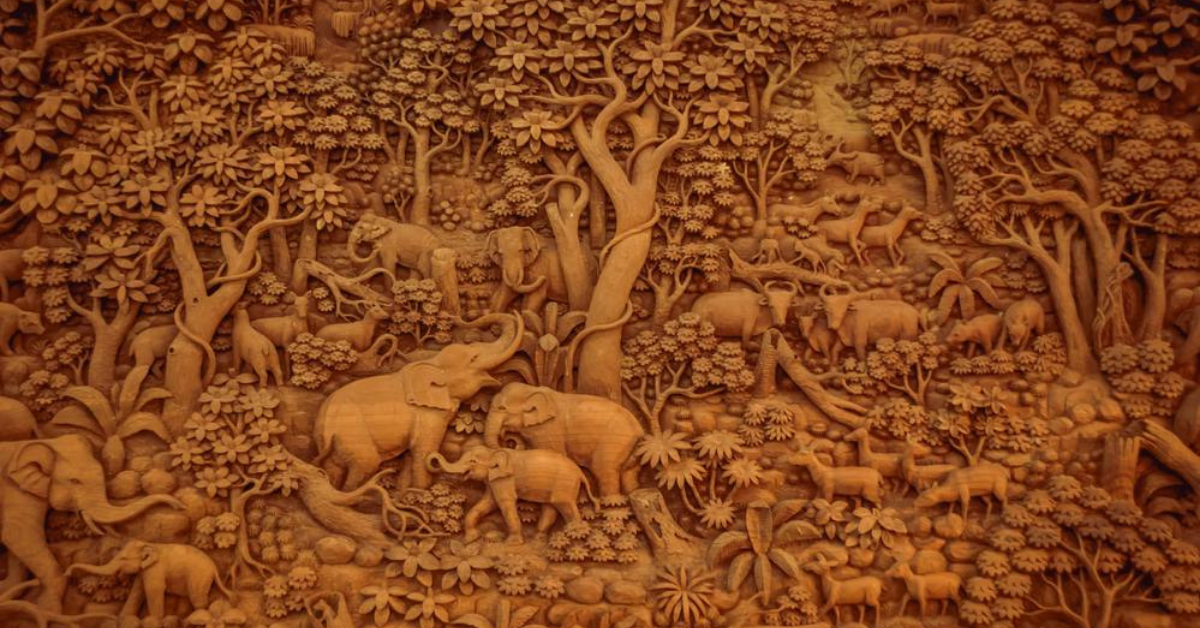Wood carving as an art - History
Wood is always about something natural, warm and unique. And that's why it takes a huge part in art in different spheres. In this blog we want to share with you about the history of wood carving as an art.
Wood carving as an art - History
From ancient times, masters of woodcarving were famous. With elements of carving, people decorated their homes. Moreover, the tools used in the process were not any special. All that was necessary for the master was an ax, a saw, a carpentry chisel. Of course, over time, all tools have been modified and improved, and even new ones have appeared. So, for example, machines appeared, with the help of which it became possible the embodiment of the most intricate patterns.

Across the millennia the craft of wood carving has served as a medium to facilitate our daily activities, narrate our folklore, express our feelings and create art that moves the human soul. It is one of the oldest arts of humankind with its beginnings going way back in prehistoric times.
Throughout history wood was used by humans for fuel, sheltering and technology advancement through the creation of tools. Wooden spears from the Middle Paleolithic, such as the Clacton Spear, reveal how humans have engaged in woodwork for millennia to create utilitarian objects.
Throughout history wood was used by humans for fuel, sheltering and technology advancement through the creation of tools. Wooden spears from the Middle Paleolithic, such as the Clacton Spear, reveal how humans have engaged in woodwork for millennia to create utilitarian objects.
It was only natural that somewhere down the road, wood would become the medium for artistry as well... wood carving in art was born! Being abundant, beautiful, relatively light and easy to carve (compared to other harder materials such as metal and stone), wood attracted the interest of people who started using it for decoration, ritual objects and religious sculptures.
Wood was one of the primary materials of many creatives coming from Africa, Oceania, Americas, Indochina and Far East. Many of the most important sculptures of China and Japan, in particular, are in wood, and so are the great majority of African sculpture and that of Oceania and other regions.
Wood was one of the primary materials of many creatives coming from Africa, Oceania, Americas, Indochina and Far East. Many of the most important sculptures of China and Japan, in particular, are in wood, and so are the great majority of African sculpture and that of Oceania and other regions.
However, its vulnerability to water, fire, insects and decay, has limited the number of wooden artefacts which have survived from the Ancient period. Outdoor wood sculptures have not lasted in most parts of the world so we still have no clue of how the totem pole tradition developed for example.
Lucky for us that Egypt has a very dry climate that preserved a substantial amount of woodcarvings to this day. Regarding wood works from Assyria, Greece and Rome, little is actually known except from history or inference.
Lucky for us that Egypt has a very dry climate that preserved a substantial amount of woodcarvings to this day. Regarding wood works from Assyria, Greece and Rome, little is actually known except from history or inference.
Nonetheless, wood carvings have survived from more recent eras demonstrating both great craftsmanship and artistry. During the Middle Ages wood works of art were created for religious purposes such as crosses, figures of saints, altarpieces and choir stalls for Cathedrals.
During Classicism wood was relegated to decoration and design. Grinling Gibbons in England was the most famous school of woodcarving. Many would name Grinling Gibbons as England's finest woodcarver. His carvings focus in portrayal of still life such as foliage and can be found in Windsor Castle and Hampton Court Palace, St. Paul's Cathedral, Petworth House, Trinity College Oxford and Trinity College Cambridge.

Trinity College Oxford
There is no doubt on the high value of wood as a material and the special place the art of wood carving holds in our lives. It is an exciting craft with many subniches open for exploration such as the relief and chip carving and whittling.















